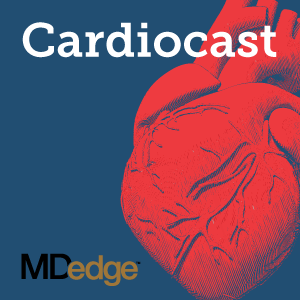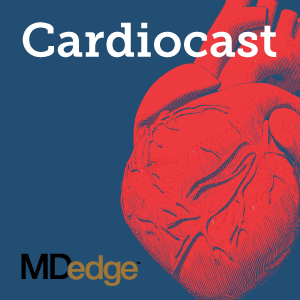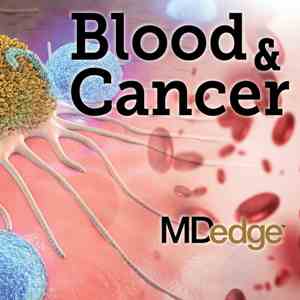User login
Got an idea for one of our podcasts? Some feedback on how we’re doing? Reach out to us at podcasts@mdedge.com.
Who is least adherent to statins, and more
This week in MDedge Cardiocast: Silent strokes are pretty common after noncardiac surgery, troubling news about nonadherence to statins, what cardiologists need to know about ARVC, and how gender inequality in medicine affects the health of ALL women.
This week in MDedge Cardiocast: Silent strokes are pretty common after noncardiac surgery, troubling news about nonadherence to statins, what cardiologists need to know about ARVC, and how gender inequality in medicine affects the health of ALL women.
This week in MDedge Cardiocast: Silent strokes are pretty common after noncardiac surgery, troubling news about nonadherence to statins, what cardiologists need to know about ARVC, and how gender inequality in medicine affects the health of ALL women.
The size of the baby boomers’ hepatitis C problem
Baby boomers account for more than 74% of chronic hepatitis C virus cases. Noncardiac surgery has a 7% covert stroke rate in the elderly. Enterovirus in at-risk children is associated with later celiac disease. And why you shouldn’t fear spironolactone, isotretinoin, or oral contraceptives for acne.
Amazon Alexa
Apple Podcasts
Google Podcasts
Spotify
Baby boomers account for more than 74% of chronic hepatitis C virus cases. Noncardiac surgery has a 7% covert stroke rate in the elderly. Enterovirus in at-risk children is associated with later celiac disease. And why you shouldn’t fear spironolactone, isotretinoin, or oral contraceptives for acne.
Amazon Alexa
Apple Podcasts
Google Podcasts
Spotify
Baby boomers account for more than 74% of chronic hepatitis C virus cases. Noncardiac surgery has a 7% covert stroke rate in the elderly. Enterovirus in at-risk children is associated with later celiac disease. And why you shouldn’t fear spironolactone, isotretinoin, or oral contraceptives for acne.
Amazon Alexa
Apple Podcasts
Google Podcasts
Spotify
How to review scientific literature
And Ilana Yurkiewicz, MD, talks about chaos and opportunity. Dr. Yurkiewicz is a fellow in hematology and oncology at Stanford (Calif.) University and is also a columnist for Hematology News. More from Dr. Yurkiewicz here.
Subscribe to Blood & Cancer here:
Show notes
By Hitomi Hosoya, MD, PhD,
Resident in the department of internal medicine, University of Pennsylvania Health System
- If you are a peer reviewer of a manuscript submitted to a journal, you should be unbiased, consistent, constructive, and focused on the research. COPE guideline is a good resource.
- If you are a reader of a published article, it is important to ensure that the abstract has the same conclusion as the body of the article.
- If you are a clinical practitioner and wondering how to apply findings of published data, the editorial section is a good source.
- If you are a trainee and wondering how to stay up-to-date, Oxford Textbook of Oncology or ASCO University are recommended.
Reference:
https://publicationethics.org/resources/guidelines-new/cope-ethical-guidelines-peer-reviewers
And Ilana Yurkiewicz, MD, talks about chaos and opportunity. Dr. Yurkiewicz is a fellow in hematology and oncology at Stanford (Calif.) University and is also a columnist for Hematology News. More from Dr. Yurkiewicz here.
Subscribe to Blood & Cancer here:
Show notes
By Hitomi Hosoya, MD, PhD,
Resident in the department of internal medicine, University of Pennsylvania Health System
- If you are a peer reviewer of a manuscript submitted to a journal, you should be unbiased, consistent, constructive, and focused on the research. COPE guideline is a good resource.
- If you are a reader of a published article, it is important to ensure that the abstract has the same conclusion as the body of the article.
- If you are a clinical practitioner and wondering how to apply findings of published data, the editorial section is a good source.
- If you are a trainee and wondering how to stay up-to-date, Oxford Textbook of Oncology or ASCO University are recommended.
Reference:
https://publicationethics.org/resources/guidelines-new/cope-ethical-guidelines-peer-reviewers
And Ilana Yurkiewicz, MD, talks about chaos and opportunity. Dr. Yurkiewicz is a fellow in hematology and oncology at Stanford (Calif.) University and is also a columnist for Hematology News. More from Dr. Yurkiewicz here.
Subscribe to Blood & Cancer here:
Show notes
By Hitomi Hosoya, MD, PhD,
Resident in the department of internal medicine, University of Pennsylvania Health System
- If you are a peer reviewer of a manuscript submitted to a journal, you should be unbiased, consistent, constructive, and focused on the research. COPE guideline is a good resource.
- If you are a reader of a published article, it is important to ensure that the abstract has the same conclusion as the body of the article.
- If you are a clinical practitioner and wondering how to apply findings of published data, the editorial section is a good source.
- If you are a trainee and wondering how to stay up-to-date, Oxford Textbook of Oncology or ASCO University are recommended.
Reference:
https://publicationethics.org/resources/guidelines-new/cope-ethical-guidelines-peer-reviewers
A prescription for medicine’s gender inequality
A small study identifies skin microbiome changes after UV exposure. Lower prices drive OTC insulin sales at Walmart. And early intensive treatment of multiple sclerosis may benefit patients.
Amazon Alexa
Apple Podcasts
Google Podcasts
Spotify
A small study identifies skin microbiome changes after UV exposure. Lower prices drive OTC insulin sales at Walmart. And early intensive treatment of multiple sclerosis may benefit patients.
Amazon Alexa
Apple Podcasts
Google Podcasts
Spotify
A small study identifies skin microbiome changes after UV exposure. Lower prices drive OTC insulin sales at Walmart. And early intensive treatment of multiple sclerosis may benefit patients.
Amazon Alexa
Apple Podcasts
Google Podcasts
Spotify
Severe skin reaction to AEDs
Also today, adherence to statins is lower among younger patients, women, and minorities, the flu season rages on, and how medication-assisted treatment impacts pregnant women with opioid use disorder.
Amazon Alexa
Apple Podcasts
Google Podcasts
Spotify
Also today, adherence to statins is lower among younger patients, women, and minorities, the flu season rages on, and how medication-assisted treatment impacts pregnant women with opioid use disorder.
Amazon Alexa
Apple Podcasts
Google Podcasts
Spotify
Also today, adherence to statins is lower among younger patients, women, and minorities, the flu season rages on, and how medication-assisted treatment impacts pregnant women with opioid use disorder.
Amazon Alexa
Apple Podcasts
Google Podcasts
Spotify
Mediterranean diet cut Parkinson’s risk
‘Telereferrals’ improved mental health referral follow-through for children. How to take action to cut cardiovascular disease risk in rheumatoid patients. And the U.S. Preventive Services Task Force recommends counseling for perinatal depression prevention.
Amazon Alexa
Apple Podcasts
Google Podcasts
Spotify
‘Telereferrals’ improved mental health referral follow-through for children. How to take action to cut cardiovascular disease risk in rheumatoid patients. And the U.S. Preventive Services Task Force recommends counseling for perinatal depression prevention.
Amazon Alexa
Apple Podcasts
Google Podcasts
Spotify
‘Telereferrals’ improved mental health referral follow-through for children. How to take action to cut cardiovascular disease risk in rheumatoid patients. And the U.S. Preventive Services Task Force recommends counseling for perinatal depression prevention.
Amazon Alexa
Apple Podcasts
Google Podcasts
Spotify
500 Women in Medicine: Part II
Ms. Gerull and Ms. Loe are third-year medical students at Washington University School of Medicine in St. Louis. According to Gerull and Loe, the aim is to create a network of support and advancement for women in medicine. 500 Women in Medicine is a pod of the organization 500 Women Scientists.
Apple Podcasts
Google Podcasts
Spotify
Ms. Gerull and Ms. Loe are third-year medical students at Washington University School of Medicine in St. Louis. According to Gerull and Loe, the aim is to create a network of support and advancement for women in medicine. 500 Women in Medicine is a pod of the organization 500 Women Scientists.
Apple Podcasts
Google Podcasts
Spotify
Ms. Gerull and Ms. Loe are third-year medical students at Washington University School of Medicine in St. Louis. According to Gerull and Loe, the aim is to create a network of support and advancement for women in medicine. 500 Women in Medicine is a pod of the organization 500 Women Scientists.
Apple Podcasts
Google Podcasts
Spotify
Intranasal esketamine gets FDA support for refractory depression
Also today, the office of the National Coordinator of Health Information Technology aims to help doctors and patients with information sharing, most physicians think that health care costs and access are unlikely to improve in 2019, and vaccination and antiviral treatment do not affect the risk of stroke following shingles.
Amazon Alexa
Apple Podcasts
Google Podcasts
Spotify
Also today, the office of the National Coordinator of Health Information Technology aims to help doctors and patients with information sharing, most physicians think that health care costs and access are unlikely to improve in 2019, and vaccination and antiviral treatment do not affect the risk of stroke following shingles.
Amazon Alexa
Apple Podcasts
Google Podcasts
Spotify
Also today, the office of the National Coordinator of Health Information Technology aims to help doctors and patients with information sharing, most physicians think that health care costs and access are unlikely to improve in 2019, and vaccination and antiviral treatment do not affect the risk of stroke following shingles.
Amazon Alexa
Apple Podcasts
Google Podcasts
Spotify
What comes first with SGLT2 inhibitors – diabetes or heart failure?
This week in MDedge Cardiocast: Most tPA-eligible stroke patients now get treated within an hour, atrial fib patients with prior hemorrhagic stroke who get their LAA closed can be safely treated, , and the MESA cardiovascular disease risk calculator can be an improvement on the ACC/AHA version.
This week in MDedge Cardiocast: Most tPA-eligible stroke patients now get treated within an hour, atrial fib patients with prior hemorrhagic stroke who get their LAA closed can be safely treated, , and the MESA cardiovascular disease risk calculator can be an improvement on the ACC/AHA version.
This week in MDedge Cardiocast: Most tPA-eligible stroke patients now get treated within an hour, atrial fib patients with prior hemorrhagic stroke who get their LAA closed can be safely treated, , and the MESA cardiovascular disease risk calculator can be an improvement on the ACC/AHA version.
ESMO 2018 and more
And Ilana Yurkiewicz, MD, stops by for this week’s Clinical Correlation. Dr. Yurkiewicz is a hematology fellow at Stanford and also is a columnist at MDedge Hematology/Oncology. More from Dr. Yurkiewicz here.
Subscribe to Blood & Cancer here:
SHOW NOTES
By Emily Bryer, DO
Resident in the department of internal medicine, University of Pennsylvania Health System
- CheckMate 142: Durable clinical benefit with nivolumab plus low-dose ipilimumab as first-line therapy in microsatellite high (MSI-H) and non-MSI-H colon cancer
- Phase 2 study included 45 patients with metastatic colorectal cancer
- Overall response rate (primary end point) was 60% and disease control rate was 84%
- Almost every patient had some response and the therapy was well-tolerated
- https://academic.oup.com/annonc/article/29/suppl_8/mdy424.019/5141601?searchresult=1
- Tribe 2: FOLFOXIRI plus bevacizumab followed by reintroduction of FOLFOXIRI plus bevacizumab versus FOLFOX plus bevacizumab followed by FOLFIRI plus bevacizumab
- Phase 3 study of 654 patients with unresectable metastatic colorectal cancer
- Progression free survival (primary end point) of FOLFOXIRI regimen was 18.9 months, compared with 16.2 months of the FOLFOX then FOLFIRI regimen
- Side effects of FOLFOXIRI: febrile neutropenia, neutropenia, GI toxicities
- https://www.thelancet.com/journals/lanonc/article/PIIS1470-2045(15)00122-9/fulltext
- Trifluridine/tipiracil versus placebo in patients with heavily pretreated metastatic gastric cancer (TAGS): a randomized, double-blind, placebo-controlled, phase 3 trial
- Phase 3 study included 506 patients with metastatic gastric cancer
- Trifluridine/tipiracil (oral drug) provided a 2-month overall survival advantage (primary end point), compared with placebo
- Major side effect: neutropenia
- https://www.ncbi.nlm.nih.gov/pubmed/30355453
- Safety and clinical activity of 1L atezolizumab plus bevacizumab in a phase 1b study in hepatocellular carcinoma (HCC)
- Phase 1B study included 100 patients with HCC who had not received prior therapy
- Disease control rate was high as was duration of response
- Primary outcomes included safety and efficacy
- The overall response rate was 34% and the most common side effect was hypertension
- http://ascopubs.org/doi/abs/10.1200/JCO.2018.36.15_suppl.4074
And Ilana Yurkiewicz, MD, stops by for this week’s Clinical Correlation. Dr. Yurkiewicz is a hematology fellow at Stanford and also is a columnist at MDedge Hematology/Oncology. More from Dr. Yurkiewicz here.
Subscribe to Blood & Cancer here:
SHOW NOTES
By Emily Bryer, DO
Resident in the department of internal medicine, University of Pennsylvania Health System
- CheckMate 142: Durable clinical benefit with nivolumab plus low-dose ipilimumab as first-line therapy in microsatellite high (MSI-H) and non-MSI-H colon cancer
- Phase 2 study included 45 patients with metastatic colorectal cancer
- Overall response rate (primary end point) was 60% and disease control rate was 84%
- Almost every patient had some response and the therapy was well-tolerated
- https://academic.oup.com/annonc/article/29/suppl_8/mdy424.019/5141601?searchresult=1
- Tribe 2: FOLFOXIRI plus bevacizumab followed by reintroduction of FOLFOXIRI plus bevacizumab versus FOLFOX plus bevacizumab followed by FOLFIRI plus bevacizumab
- Phase 3 study of 654 patients with unresectable metastatic colorectal cancer
- Progression free survival (primary end point) of FOLFOXIRI regimen was 18.9 months, compared with 16.2 months of the FOLFOX then FOLFIRI regimen
- Side effects of FOLFOXIRI: febrile neutropenia, neutropenia, GI toxicities
- https://www.thelancet.com/journals/lanonc/article/PIIS1470-2045(15)00122-9/fulltext
- Trifluridine/tipiracil versus placebo in patients with heavily pretreated metastatic gastric cancer (TAGS): a randomized, double-blind, placebo-controlled, phase 3 trial
- Phase 3 study included 506 patients with metastatic gastric cancer
- Trifluridine/tipiracil (oral drug) provided a 2-month overall survival advantage (primary end point), compared with placebo
- Major side effect: neutropenia
- https://www.ncbi.nlm.nih.gov/pubmed/30355453
- Safety and clinical activity of 1L atezolizumab plus bevacizumab in a phase 1b study in hepatocellular carcinoma (HCC)
- Phase 1B study included 100 patients with HCC who had not received prior therapy
- Disease control rate was high as was duration of response
- Primary outcomes included safety and efficacy
- The overall response rate was 34% and the most common side effect was hypertension
- http://ascopubs.org/doi/abs/10.1200/JCO.2018.36.15_suppl.4074
And Ilana Yurkiewicz, MD, stops by for this week’s Clinical Correlation. Dr. Yurkiewicz is a hematology fellow at Stanford and also is a columnist at MDedge Hematology/Oncology. More from Dr. Yurkiewicz here.
Subscribe to Blood & Cancer here:
SHOW NOTES
By Emily Bryer, DO
Resident in the department of internal medicine, University of Pennsylvania Health System
- CheckMate 142: Durable clinical benefit with nivolumab plus low-dose ipilimumab as first-line therapy in microsatellite high (MSI-H) and non-MSI-H colon cancer
- Phase 2 study included 45 patients with metastatic colorectal cancer
- Overall response rate (primary end point) was 60% and disease control rate was 84%
- Almost every patient had some response and the therapy was well-tolerated
- https://academic.oup.com/annonc/article/29/suppl_8/mdy424.019/5141601?searchresult=1
- Tribe 2: FOLFOXIRI plus bevacizumab followed by reintroduction of FOLFOXIRI plus bevacizumab versus FOLFOX plus bevacizumab followed by FOLFIRI plus bevacizumab
- Phase 3 study of 654 patients with unresectable metastatic colorectal cancer
- Progression free survival (primary end point) of FOLFOXIRI regimen was 18.9 months, compared with 16.2 months of the FOLFOX then FOLFIRI regimen
- Side effects of FOLFOXIRI: febrile neutropenia, neutropenia, GI toxicities
- https://www.thelancet.com/journals/lanonc/article/PIIS1470-2045(15)00122-9/fulltext
- Trifluridine/tipiracil versus placebo in patients with heavily pretreated metastatic gastric cancer (TAGS): a randomized, double-blind, placebo-controlled, phase 3 trial
- Phase 3 study included 506 patients with metastatic gastric cancer
- Trifluridine/tipiracil (oral drug) provided a 2-month overall survival advantage (primary end point), compared with placebo
- Major side effect: neutropenia
- https://www.ncbi.nlm.nih.gov/pubmed/30355453
- Safety and clinical activity of 1L atezolizumab plus bevacizumab in a phase 1b study in hepatocellular carcinoma (HCC)
- Phase 1B study included 100 patients with HCC who had not received prior therapy
- Disease control rate was high as was duration of response
- Primary outcomes included safety and efficacy
- The overall response rate was 34% and the most common side effect was hypertension
- http://ascopubs.org/doi/abs/10.1200/JCO.2018.36.15_suppl.4074







